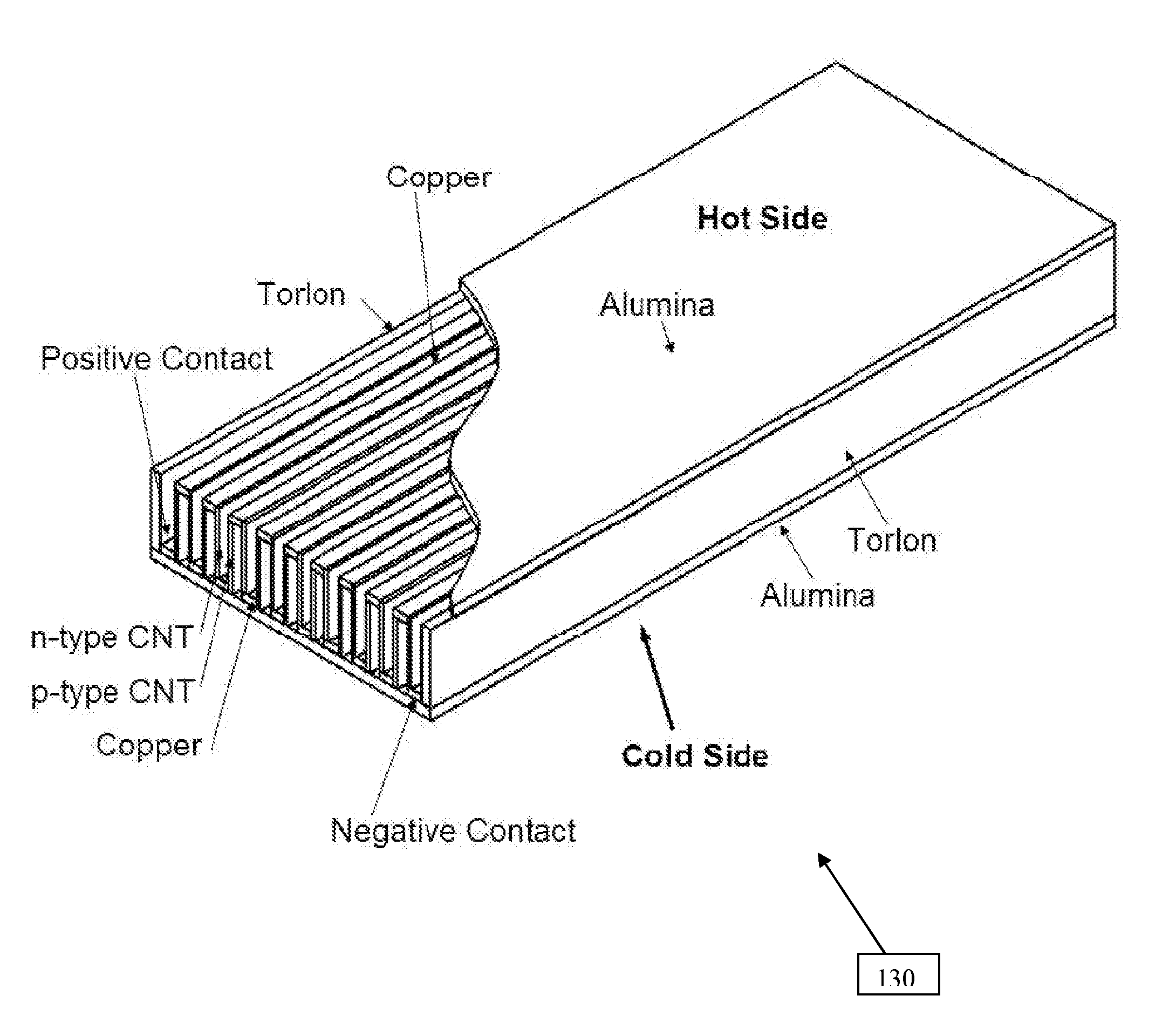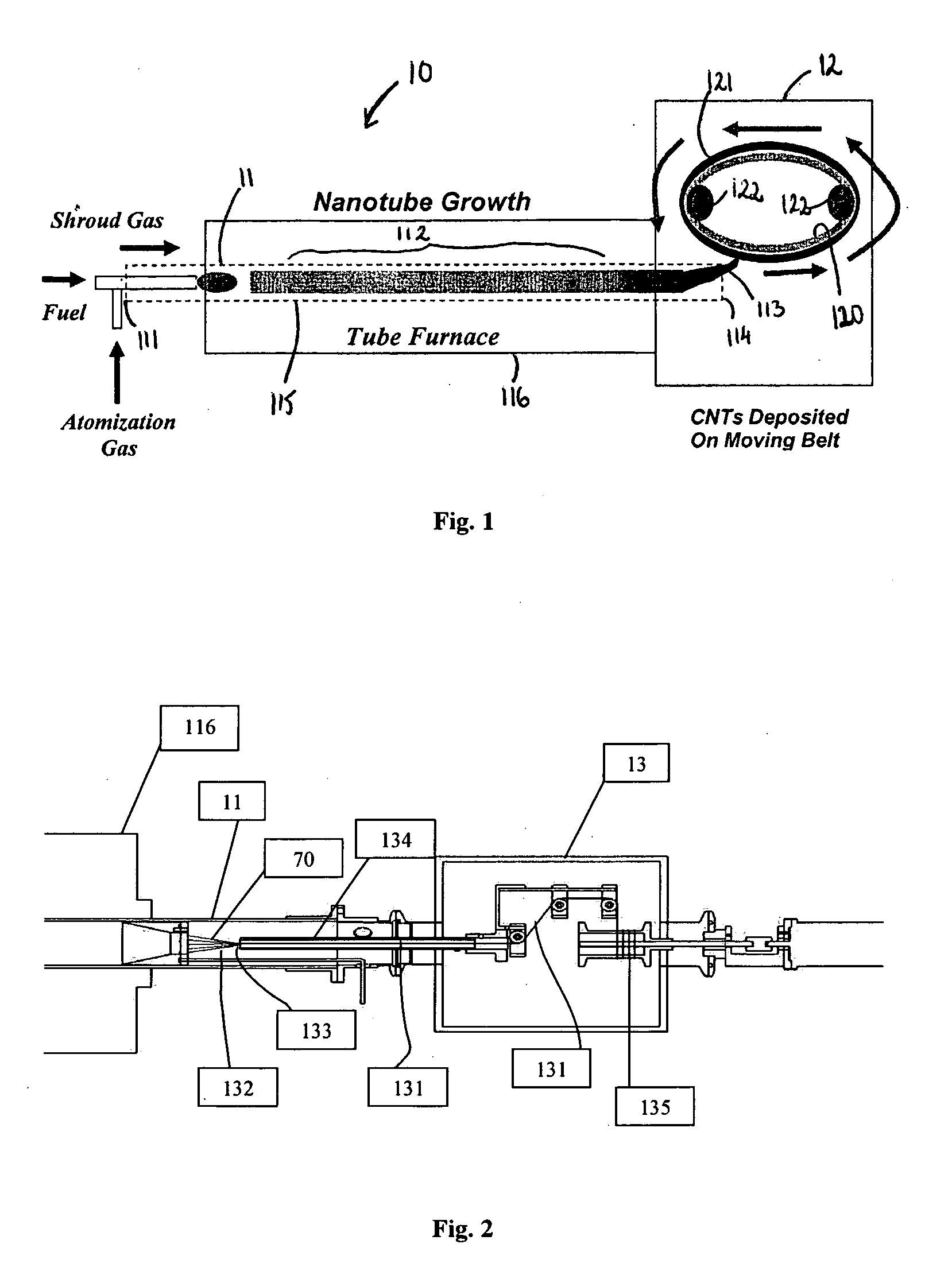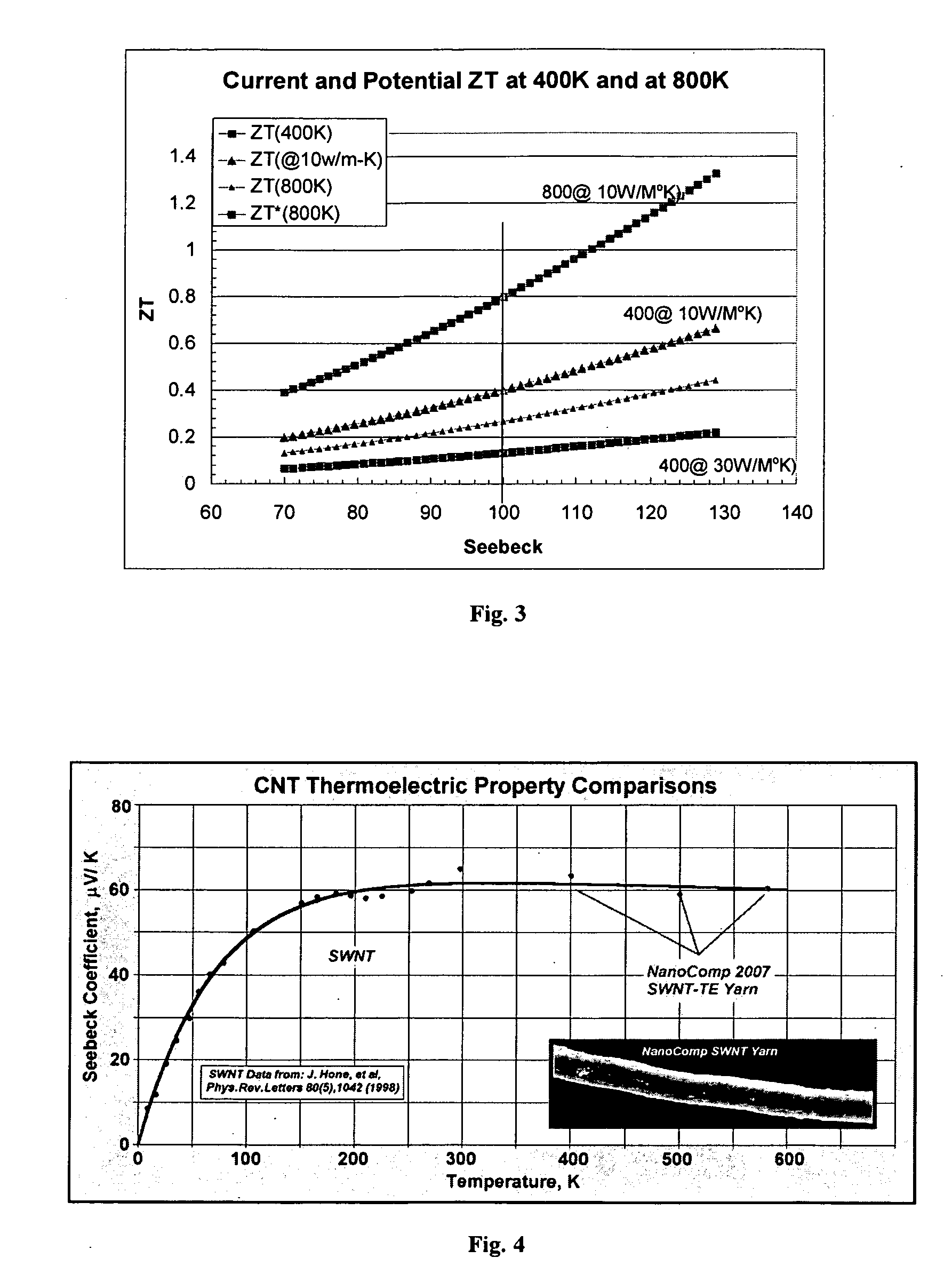Nanostructured Material-Based Thermoelectric Generators
a nanostructured material and generator technology, applied in the field of power generators, can solve the problems of high thermal conductivity , poor behavior of materials, and high weight of devices made of high performace materials, and achieve high seebeck coefficient, high specific power, and high transition temperature
- Summary
- Abstract
- Description
- Claims
- Application Information
AI Technical Summary
Benefits of technology
Problems solved by technology
Method used
Image
Examples
example i
[0074]In this example, a thermoelectric device or generator is provided using at least one carbon nanotube sheet made in accordance with an embodiment of the present invention.
[0075]With reference now to FIG. 7, there is shown a schematic diagram of an array 70 of a thermal element 71 and a conducting element 72 in substantial linear alignment. In one embodiment, element 71 can be a sheet of carbon nanotubes doped with a p-type dopant. Alternatively, element 71 can be a sheet of carbon nanotubes doped with an n-type dopant. Although reference is made to a sheet of carbon nanotubes, it should be appreciated that a plurality of sheets can be used, with each placed on top of one another. This is because, when using a plurality of sheets, the mass can increase, which can result in more power output in the thermoelectric device.
[0076]Conducting element 72, on the other hand, may be made from a metallic material, such as copper, nickel, or other similar conductive materials. In one embodi...
example ii
[0091]In this embodiment, a thermoelectric device is provided using at least one carbon nanotube yarn made in accordance with an embodiment of the present invention.
[0092]Looking now at FIG. 10, a solar collector 100 is provided. The solar collector 100, in an embodiment, includes a thermoelectric device 101 having a outer ring 102 and an inner member 103 concentrically positioned relative to the outer ring 102. Inner member 103, as illustrated, may be a hot plate designed to collect heat from solar rays, while outer ring 102 may be a cool plate designed to dissipate heat. Thermoelectric device 101 may also include a core 104 having at least one carbon nanotube yarn 105, made from a plurality of intertwined nanotubes in substantially alignment. Yarn 105, in an embodiment, extends radially between the inner member 103 and the outer ring 102, and can act as a thermal element. In one embodiment, yarn 105 may be a p-type element or n-type element coated (i.e., electroplated) along its l...
example iii
[0093]In this embodiment, a multi-element thermoelectric array is provided using a plurality of carbon nanotube yarns made in accordance with one embodiment of the present invention.
[0094]As illustrated in FIGS. 11A-D, a thin thermoelectric panel 110 is provided. The thin panel 110, in an embodiment, includes a plurality of thin thermal elements 111 (FIG. 11C) made from nanotube yarns. In one embodiment, about 30-1000 or more elements 111 having high hot-cold gap length and a small cross-section can be provided on the thin panel 110. These elements 111, designed to act as p-type elements, may be positioned on, for example, a substrate 112 made from, for example, aluminum nitride, mica or other similar material. In an embodiment, the substrate 112 may be coated with copper or nickel on a side on which the carbon nanotube thermal elements are situated (FIG. 11A), while its opposite side remains uncoated (FIG. 11B). On the uncoated side, panel 110 may be provided with a plurality of co...
PUM
 Login to View More
Login to View More Abstract
Description
Claims
Application Information
 Login to View More
Login to View More - R&D
- Intellectual Property
- Life Sciences
- Materials
- Tech Scout
- Unparalleled Data Quality
- Higher Quality Content
- 60% Fewer Hallucinations
Browse by: Latest US Patents, China's latest patents, Technical Efficacy Thesaurus, Application Domain, Technology Topic, Popular Technical Reports.
© 2025 PatSnap. All rights reserved.Legal|Privacy policy|Modern Slavery Act Transparency Statement|Sitemap|About US| Contact US: help@patsnap.com



